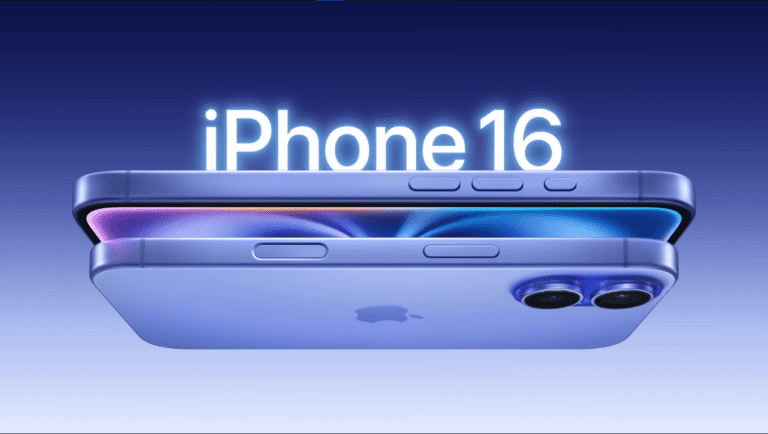6G Connectivity will knock your socks off

Can you even imagine your life without wireless communication now a days? no right? Imagine hanging an ethernet cable all day long to your phone. How frustrating would that be? The wireless communication is moving forward to a new era, which will be introduced by 6G network. This next-generation cellular network is set to push the boundaries of speed, capacity, and low latency, leaving its predecessor, 5G, in the dust. With the potential to transform industries and reshape our daily lives, 6G technology has become the focal point of global research and development efforts.
The race to dominate the 6G landscape is heating up, with nations and tech giants racing for supremacy in this cutting-edge field. From lightning-fast data transfer to seamless integration with artificial intelligence, 6G will bring forth the exciting possibilities that the future of connectivity holds and what it means for our increasingly interconnected world.
What is 6G?
6G, the sixth generation of wireless technology, is set to revolutionize connectivity. It’s the successor to 5G, operating on higher radio frequencies and promising mind-boggling speeds. Imagine downloading 142 hours of top-notch Netflix content in just one second! That’s the power of 6G, with its capability to deliver a whopping 1 terabyte per second.
Key features of 6G
6G isn’t just about speed; it’s a whole new ball game. It’s expected to operate in the frequency range of 95 GHz to 3 THz, pushing the boundaries of what’s possible. With latency dropping to a mere 1 microsecond, 6G will make real-time interactions feel like child’s play. It’s like the difference between blinking and, well, thinking about blinking!
How 6G differs from 5G
While 5G is still finding its footing, 6G is already sprinting ahead. Here’s a quick comparison:
| Feature | 5G | 6G |
|---|---|---|
| Speed | 20 GB/s | 1 TB/s |
| Latency | 1 millisecond | 1 microsecond |
| Frequency | Sub-6 GHz and above 24.25 GHz | 95 GHz to 3 THz |
| IoT Connectivity | Good | 1 million devices per km² |
6G isn’t just faster; it’s smarter too. While 5G networks need external AI to make decisions, 6G networks will be self-reliant, making decisions at every layer, like upgrading from a smart home to a genius mansion!
Potential Applications of 6G
Smart Cities and IoT
Imagine a city where everything’s connected, from traffic lights to trash cans. That’s the promise of 6G-powered smart cities. With its lightning-fast speeds and ultra-low latency, 6G will turn our urban jungles into tech-savvy paradises. It’ll be like giving cities a caffeine shot, making them more efficient and eco-friendlier.
The Internet of Things (IoT) will explode with 6G, connecting a mind-boggling number of devices that are accessible through network. We’re talking about sensors on every street corner, in every building, and maybe even in your toothbrush! This massive network will collect data faster than gossip spreads in a small town, helping cities make smarter decisions about everything from energy use to waste management.
Holographic Communications
Remember those sci-fi movies where people chat with 3D holograms? Well, 6G is bringing that fantasy to life. Holographic teleconferences will make flat-screen video calls look as outdated as carrier pigeons. You’ll experience as if you’re in the same room with colleagues from across the globe, complete with realistic 3D presence and even haptic feedback. Imagine shaking hands with someone on the other side of the planet! How cool is that!
This isn’t just cool tech; it’s a game-changer for remote work, education, and healthcare. Doctors could perform surgeries from thousands of miles away, feeling every incision as if they were right there in the operating room.
Autonomous Vehicles
Buckle up, because 6G is taking self-driving cars to the next level. With its ability to process vast amounts of data in the blink of an eye, 6G will make autonomous vehicles smarter, safer, and more efficient than ever before. These high-tech chariots will communicate with each other and their surroundings faster than you can say “road trip,” creating a harmonious dance of traffic that’ll make rush hour a breeze.
But it’s not just about cars. We’re talking about a whole ecosystem of autonomous transport, from delivery drones buzzing overhead to self-driving boats cruising our waterways. It’s like the entire world is getting its driver’s license, only without the awkward DMV photos.
Global race for 6G Dominance
The race for 6G dominance is heating up, and it’s like a high-tech version of the Olympics. Six countries are sprinting ahead: the United States, China, South Korea, Japan, Finland, and Europe. Each is flexing its technological muscles, trying to be the first to cross the finish line in the next decade.
South Korea, the Usain Bolt of the tech world, is aiming to leave everyone in the dust. They’re not just running; they’re investing 440 billion won ($324 million USD) until 2026 in 6G research and development. Their goal? To have 6G ready by 2028, two years ahead of schedule. Talk about being an overachiever!
Not to be outdone, Japan is also lacing up its running shoes. They’ve published a “Beyond 5G” strategy, setting milestones for deployment. It’s like they’re planning a tech marathon, complete with water stations and cheering crowds.
The U.S. and China are the Goliaths in this race. While the U.S. government hasn’t set an official program, American companies are taking the lead with initiatives like the Next G Alliance. China, on the other hand, has announced a national 6G research group. It’s like watching two tech giants in a friendly arm-wrestling match, except with billions of dollars at stake.
Finland, the land of Nokia and saunas, is proving to be the dark horse in this race. They launched the world’s first 6G coordinated initiative in 2018, with a budget that would make even Silicon Valley raise an eyebrow. Feels like they’re secretly training in the snowy forests, ready to surprise everyone at the finish line.
Technical Hurdles in 6G Development
The journey to 6G is like trying to teach an old dog new tricks, except the dog is a network, and the tricks involve bending the laws of physics. One of the biggest hurdles? Taming the wild Terahertz frequency band. It’s like trying to ride a unicycle on a tightrope – high propagation loss, poor penetration, and significant molecular absorption make it a tricky balancing act. But hey, who said revolutionizing communication would be easy?
Infrastructure Requirements
Building 6G infrastructure is like constructing a house of cards in a hurricane. It needs to be robust, flexible, and able to handle data traffic that makes rush hour look like a Sunday drive. Network densification is the name of the game, with more cell sites, antennas, and small cells than you can shake a stick at. And let’s not forget edge computing – which is equivalent to having a supercomputer in your backyard, reducing latency and improving network performance. It’s a tall order, but someone’s got to fill it!
Security Concerns
In the 6G world, security is more important than ever. Hackers will have new tools at their disposal, including AI and quantum computing, making current security measures look about as effective as a screen door on a submarine. From ransomware attacks to corporate espionage, the threats are evolving faster than you can say “firewall.” It’s a cyber arms race, and only the paranoid will survive!
Final Thoughts
6G ain’t bad, right? From lightning-fast data speeds to seamless holographic communications, 6G has the potential to transform industries and redefine our daily interactions. The global race for 6G dominance highlights its strategic importance, with nations investing heavily to secure a competitive edge in this cutting-edge field. Technical challenges, infrastructure requirements, and security concerns all need careful consideration to bring this revolutionary technology to fruition. Yet, the promise of smart cities, autonomous vehicles, and unprecedented connectivity continues to drive innovation forward. Ciao.










